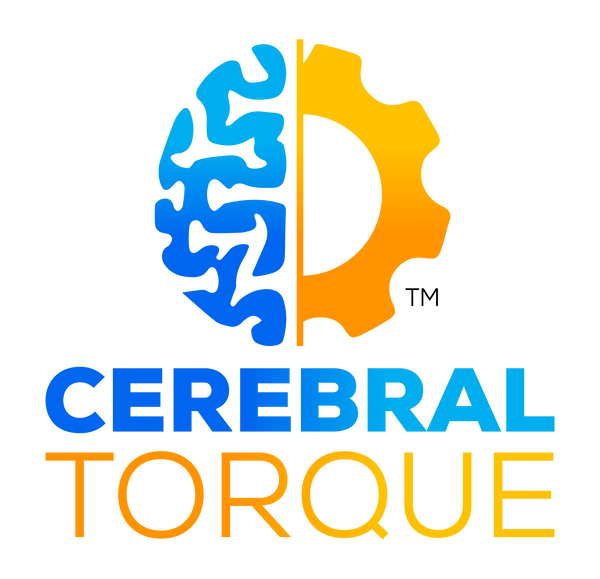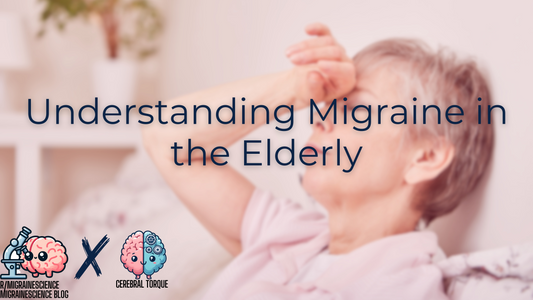
Migraine, Cluster, Tension-Type, and Hypnic Headaches: A Complete Timeline Guide
Cerebral TorqueShare
1. Detailed Attack Characteristics
| Feature | Migraine | Tension-Type Headache | Cluster Headache | Hypnic Headache |
|---|---|---|---|---|
| Duration Range | • General range: 4-72 hours • Non-perimenstrual women: 16 hours (median) • Perimenstrual women: 23 hours (median) • Men: 14 hours (median) • Chronic migraine: 44.4 hours (average) |
• Episodic: 30 min - 7 days • Chronic: Hours to days or unremitting • Duration affected by central sensitization |
• Standard: 15-180 minutes • Longer durations in women • Extended in those with migraine features |
• Range: 15 min - 4 hours • Consistent timing pattern • Similar duration to cluster headache |
| Daily Timing Pattern | • Morning predominance (6:00-12:00 AM) • Afternoon onset in children • Night predominance in elderly |
• No consistent daily pattern • Can be affected by sleep disorders • May be influenced by stress patterns |
• Strong nighttime pattern (9 PM-2 AM) • Often during first REM sleep phase • Predictable timing within individuals |
• Strictly nocturnal (1:00-5:30 AM) • Occurs ≥4 nights/week • Highly predictable timing |
| Seasonal Variations | • Light season predominance (MA) • Peaks: November to January • Nadir: July • Spring/autumn variations reported |
• No clear seasonal pattern • Limited chronobiological evidence • May be affected by stress cycles |
• Strong spring/fall pattern • Lower frequency in summer • Linked to daylight patterns • Influenced by photoperiodism |
• No clear seasonal pattern reported • Consistent year-round occurrence • Focus on nocturnal timing |
| Age & Gender Specifics | • Peak onset: Women 20-24, Men 15-19 • Median onset: Women 25, Men 24 • F:M ratio = 3:1 • Earlier onset may indicate worse prognosis |
• Mean onset: 29.1 years • Men: 29.8 years • Women: 28.5 years • F:M ratio = 1.2:1 |
• Mean onset: ~30 years • Men: 29.7 years • Women: 30.3 years • M:F ratio = 4:1 |
• Late-life onset: 44-86 years • Distinct from other headache types • Gender ratio not well established |
2. Pathophysiological Mechanisms
| Headache Type | Central Mechanisms | Peripheral Mechanisms | Genetic/Molecular Factors |
|---|---|---|---|
| Migraine | • Hypothalamic activation • Salience network involvement • EEG slowing during attacks • Brain excitability changes |
• Estrogen level fluctuations • Vascular inflammatory markers • Higher PTX-3 levels in shorter attacks • Trigeminovascular activation |
• G10 T (intron 23) genotype • GPX1 gene polymorphisms • Oxidative stress genes • 35-60% heritability |
| Tension-Type | • Alpha2-adrenergic mechanisms • Central sensitization • Limited chronobiological patterns |
• Myofascial trigger points • Peripheral sensitization • Muscle tension involvement |
• Lower genetic influence • Higher heritability without migraine • Specific genes unknown |
| Cluster | • Strong hypothalamic involvement • SCN regulation of circadian rhythm • Increased grey matter volume |
• Retinal light sensitivity • Vitamin D deficiency correlation • Autonomic system involvement |
• CLOCK gene variations • HCRTR2 involvement • PER3 component effects • MERTK gene influence |
| Hypnic | • Circadian rhythm involvement • Sleep-wake cycle connection • Distinct from REM patterns |
• Limited understanding • No autonomic involvement • Differentiates from cluster |
• Genetic factors not well studied • Limited molecular understanding |
3. Disease Evolution & Treatment Implications
| Aspect | Disease Evolution | Clinical Characteristics | Treatment Considerations |
|---|---|---|---|
| Migraine | • 46% persistence in 10-year follow-up • 14% have migraine attack remission • Changes in attack characteristics • Pattern changes with age |
• Shorter duration in children • More bilateral in elderly • Less severe with aging • Changes in autonomic features |
• Early treatment more effective • Timing affects treatment response • Consider chronotype in prevention • Age-specific approaches needed |
| Tension-Type | • Higher remission than migraine • 32% retain diagnosis at 5 years • 29% achieve remission • May transform to other types |
• Consistent features across ages • Less variation in presentation • Frequency peaks at 30-39 years |
• Focus on trigger point treatment • Address central sensitization • Consider comorbid conditions |
| Cluster | • 33% achieve remission • Mean remission age: 42 years • Features may decrease over time • Pattern may become less predictable |
• Strong chronobiological features • Distinct circadian/circannual patterns • Clear seasonal variations |
• Time preventive treatment with cycles • Consider chronotherapy • Account for seasonal patterns |
| Hypnic | • Late-life onset pattern • Consistent timing maintained • Long-term evolution less studied |
• Strictly nocturnal occurrence • Regular timing pattern • No autonomic features |
• Focus on sleep-related interventions • Consider age-related factors • Timing of preventive measures |
4. Environmental & Trigger Factors
| Factor Category | Impact on Timing | Clinical Relevance |
|---|---|---|
| Light Exposure | • Affects circadian rhythms • Influences seasonal patterns • Important in cluster headache cycles • Affects migraine with aura |
• Consider light management strategies • Important for preventive planning • Relevant for treatment timing |
| Sleep Patterns | • Triggers cluster headache attacks • Affects migraine frequency • Critical in hypnic headache • Influences attack timing |
• Sleep hygiene importance • Treatment timing considerations • Prevention strategies |
| Hormonal Cycles | • Menstrual migraine timing • Affects attack duration • Influences frequency patterns • Age-related changes |
• Hormonal treatment timing • Preventive strategy planning • Life-stage considerations |
| Stress Patterns | • Work-related timing • School stress in children • Seasonal stress variations • Daily stress cycles |
• Stress management timing • Prevention planning • Lifestyle modifications |


